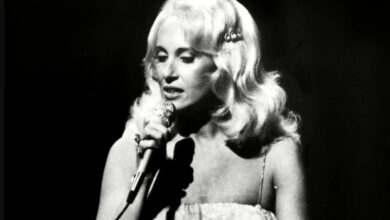The Enigmatic Lyrics of “A Whiter Shade of Pale” and Their Cultural Impact
Procol Harum’s “A Whiter Shade of Pale,” released in 1967, has etched its place in music history as one of the most iconic songs of the era. The track is celebrated not only for its distinctive Bach-inspired organ melody but also for its enigmatic lyrics that invite multiple interpretations. Co-written by Gary Brooker and lyricist Keith Reid, the song achieved remarkable commercial success, topping the UK charts for six weeks and reaching No. 5 in the United States. Its haunting sound and poetic depth encapsulated the spirit of the “Summer of Love,” making it a defining anthem of the 1960s.
The creation of “A Whiter Shade of Pale” was almost serendipitous. Gary Brooker, having already developed a musical idea influenced by classical music, discovered Reid’s evocative lyrics. This combination of Brooker’s melodic vision and Reid’s intricate wordplay formed a unique collaboration that resonated with listeners. The song’s arrangement featured the haunting organ work of Matthew Fisher, which provided a lush, atmospheric backdrop that enhanced its dreamlike quality. The result was a track that transcended the typical boundaries of popular music, blending rock with Baroque elements.
The lyrics of “A Whiter Shade of Pale” are rich with literary references and abstract imagery, making it a subject of analysis and interpretation. The mention of Chaucer and Shakespeare adds a layer of complexity, prompting listeners to delve deeper into its meaning. Themes of love, loss, and existential questioning can be discerned, making the song relatable on multiple levels. The ambiguity of the narrative allows for personal connections, leading to diverse interpretations ranging from romantic longing to broader existential themes.
Despite its rapid ascent to fame, Procol Harum faced legal challenges in later years over songwriting credits related to “A Whiter Shade of Pale.” This controversy highlighted the complexities often associated with artistic collaboration. Nonetheless, the song has left an indelible mark on music history, influencing a range of artists from The Beatles to Brian Wilson of The Beach Boys. Its impact on popular music is profound, as it opened the door for other bands to explore similar fusions of rock and classical elements.
Procol Harum’s formation in the mid-1960s came at a pivotal moment in music history. The band emerged from a desire to blend American R&B influences with classical sensibilities, a unique approach that set them apart from their contemporaries. Their early performances helped to establish their reputation, including a memorable show where Jimi Hendrix famously joined them on stage, further enhancing their legendary status.
Following the success of “A Whiter Shade of Pale,” Procol Harum continued to innovate within the progressive rock genre. The band experimented with orchestration and complex arrangements, pushing the boundaries of what rock music could encompass. Their ability to incorporate classical music elements paved the way for future bands, influencing the development of progressive rock as a genre.
The cultural impact of “A Whiter Shade of Pale” extends beyond its initial release. The song has been covered by numerous artists, including Annie Lennox, whose rendition highlights the track’s timeless quality. Its appearances in films and television shows have solidified its status as a cultural touchstone. The haunting melody and evocative lyrics continue to resonate with new generations of listeners, ensuring that the song remains relevant today.
Procol Harum’s contributions to music were recognized with their induction into the Grammy Hall of Fame and the Rock and Roll Hall of Fame. These accolades reflect the band’s enduring influence and the lasting legacy of their music. “A Whiter Shade of Pale” stands as a testament to their creativity and artistry, showcasing their ability to craft songs that transcend time.
Throughout the years, Gary Brooker and the band have remained active in the music scene, releasing new material and performing live. Their commitment to artistic evolution while honoring their classic sound has kept their fan base engaged. Procol Harum’s legacy is characterized by their innovative spirit and willingness to explore new musical territories, ensuring their place in the pantheon of rock history.
Ultimately, “A Whiter Shade of Pale” is more than just a song; it is a cultural artifact that captures the complexities of love, loss, and the human experience. Its combination of poetic lyrics and captivating melodies continues to inspire musicians and listeners alike, reinforcing its status as one of the defining songs of the 1960s and beyond. The song’s resonance through the decades speaks to the power of music as a medium for emotional expression and artistic exploration.



